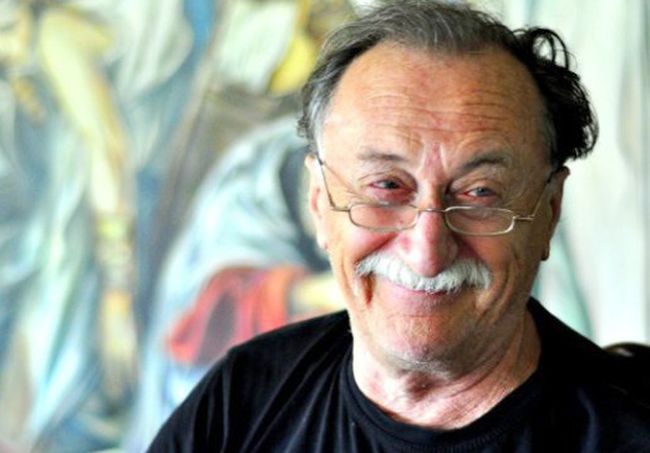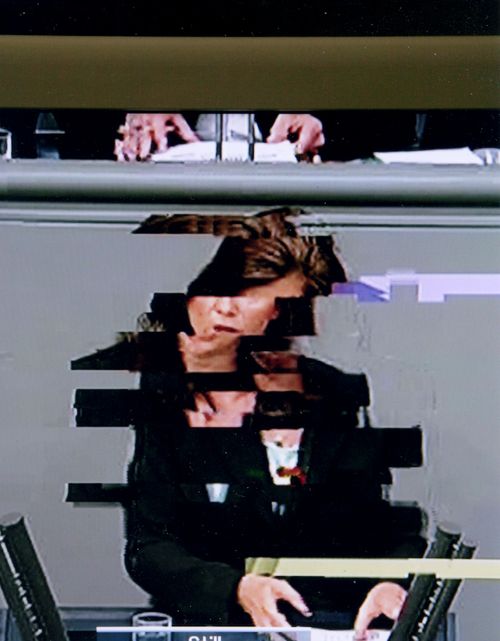By law, for justice’s sake or for art’s sake?
By law, for justice’s sake or for art’s sake?
Our state seems to have made the first noteworthy attempt to represent itself at the Venice Biennale. By the rules, every country appoints a commissioner, usually a culture ministry official in charge of general issues, and a curator who is in fact responsible for the concrete content of a Biennale national pavilion. This time selection was made, perhaps for the first time, openly and transparently by way of a ranked-choice vote at the contest commission, which resulted in the victory of a curator group consisting of Peter Doroshenko and Lilia Kudelia, while Dallas Contemporary, a contemporary art center in the US, where Doroshenko and Kudelia work, was chosen as Ukrainian pavilion organizer.
Peter Doroshenko, a Ukrainian American, has been executive director of Dallas Contemporary since 2009. Before that, he held top executive posts in a number of art institutions in the US and Europe, including Stedelijk Museum voor Actuele Kunst (S.M.A.K.) in Ghent, Belgium. In Ukraine, Doroshenko was a member of the Supervisory Board of the Soros Contemporary Art Center in Kyiv, and, as a representative of the Pinchuk Art Center, was the curator of the Ukrainian pavilion in Venice in 2007 and 2009. Lilia Kudelia, a Kyiv Mohyla Academy graduate in culture studies, worked at Mystetsky Arsenal in 2010-11 and was in charge of the first exhibition in the US of the Ukrainian photography duet Synchrodogs. She is now a junior curator at Dallas Contemporary.
As a matter of fact, Doroshenko and Kudelia offered the best choice – Ukraine will be represented this year by Borys Mykhailov, a living legend of European contemporary art.
Born in 1938 in Kharkiv, Mykhailov lives in Berlin, still remaining a Ukrainian citizen. In almost 40 years, he has created over 30 photo series and published more than 20 photo books. What brought him special fame are his social-theme pictures. He received the Goslar Kaissering Award in 2015, the Hasselblad Foundation International Award in 2000, the Spectrum International Prize in 2012, the Citibank Photography Prize, and the Kraszna-Krausz Foundation Best Photography Book Award in 2001. He held solo exhibits at the Museum of Modern Art (MoMA) in New York, the Institute of Contemporary Art (Boston), Tate Modern (London), Stedelijk Museum (Amsterdam), Fotomuseum (Antwerp), Berlinische Galerie (Berlin), Sprengel Museum (Hanover), Kunsthalle Zurich, and many other museums and galleries of Western Europe and America. His works were also exhibited at the 5th and 25th Manifest, the 12th Sydney Biennale, and the 54th Venice Biennale.

FROM THE “PARLIAMENT” SERIES
Mykhailov is going to present in Venice “Parliament,” a brand new series of works, which examines the interaction of photography with other visual genres as well as borderlines between analogue and digital representations. The author makes screenshots of parliamentary debates, blurring and fragmenting some contours. Thus, by way of double optic displacement, he conveys the picture of a “post-informational” society in which falsified news has a colossal impact on human brains, while the truth is being fragmented and blurred (incidentally, this brings to mind the incredible phase “alternative facts” used by an aide of Trump). There is no direct social motif here, which once made Mykhailov famous. Instead, “Parliament” is continuation of his no less known esthetic experiments with “sandwiches,” aniline-touched-up Soviet photos, and captions in the margins of pictures. Mykhailov himself calls the “Parliament” cycle “an esthetic version of historical footage.” Yes, present-day history is being written by television and the internet, and it is up to the artists of Mykhailov’s level to subject this phenomenon to artistic reflection.
The master will be accompanied by young Ukrainian artists. The Kharkiv-based group SVITER and Kyivite Ivan Svitlychnyi will create the pavilion’s sonic atmosphere. The group Zhuzhalka composed of Donetsk-born Viktor Korvik, Viacheslav Sokolov, and Roman Yukhymchuk (“zhuzhalka” is a Donetsk word for coal cinder which is sprinkled over ice-covered sidewalks; it is a good photographic metaphor) will present a conceptual installation as the author’s own echo of “Parliament.” Designer Anton Belinskyi is responsible for the pavilion’s handouts, such as T-shirts with Ukrainian symbols, which are indispensable at such a market of representations as biennale.
Yet the situation is not as cloudless as it looks in official press releases.
For example, independent curators Kateryna Filiuk, Lizaveta Herman, and Maria Lanko, whose project “A Wedding in Venice” came off second best, have formally accused the commission of violating the procedure, for Dallas Contemporary had at first invited another world-famous artist, conceptualist guru Illia Kabakov, who was born and lived the first eight years of his life in Dnipro, Ukraine. Unfortunately, Kabakov had to refuse to work on our pavilion for health reasons (a stroke). It is important to note here that the preparation for his big exhibit in London this year had not been stopped only because it has been underway for more than a year.
As the “Wedding in Venice” authors point out, the competition’s regulations have a clause that “if the competitive curator’s proposal that has taken first place cannot be implemented due to force majeure circumstances, the Minister of Culture of Ukraine – the representative of Ukraine – can decide that the competitive curator’s proposal and its author that have taken second place in the process of selection will be, accordingly, the national cultural project and the curator of the national cultural project.”
On the other hand, Mykhailov is 79 now, and, regardless of all of his achievements, Ukraine has been unable to organize at least one (!) solo exhibit of his in the whole period of independence. Mykhailov does not practically exist in the space of our actual art. And the Venice project can be at least some kind of step to restore justice.
So, in the final analysis, the situation has led to our unavoidable choice between justice and the law. All we can do is to hope that at least art and, after all, Ukraine will stand to gain.
The Day’s FACT FILE
The Venice Biennale – La biennale di Venezia – was founded in 1985 and is one of the most important international art events. It is held once in two years. The 57th biennale will take place on May 13 – November 26, 2017, under the slogan “Viva arte viva!” The biennale awards – Golden Lion for the best national exposition, Golden Lion for the best artist, Silver Lion for the best young artist, and the honorary Golden Lion for lifetime achievement – will be given to winners in mid-May.
Newspaper output №:
№7, (2017)Section
Culture





